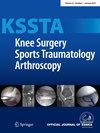A bone graft from the tibial resection or patella that rectified a tibial over-resection reliably healed and improved clinical outcome scores: A retrospective study of kinematically aligned TKA
Abstract
Purpose
During kinematically aligned (KA) total knee arthroplasty (TKA), the surgeon may need to rectify an over-resection of the medial, lateral or posterior tibia. This study tested the hypothesis that a bone graft taken from the tibial resection or patella and impacted beneath a tibial baseplate would heal, regardless of whether the tibial component and knee were in outlier ranges according to mechanical alignment (MA) criteria. The study also tested the hypothesis that the Oxford Knee Score (OKS) and Knee Injury and Osteoarthritis Outcome Score for Joint Replacement (KOOS JR) would improve beyond the substantial clinical benefit and that the source and thickness of the bone graft would not influence their improvement.
Methods
This retrospective study radiographically assessed the healing of a bone graft from the tibial resection (n = 19) or patella (n = 10) in 29 KA TKAs (18 females, mean age 65 years). The tibial component and knee alignment were categorized as in-range or outliers based on reported MA criteria for bone graft healing and implant survival. The one-sample t test identified differences in the improvement of the OKS and KOOS JR from their reported substantial clinical benefit of 16 and 20 points, respectively.
Results
At an average follow-up of 37 months, all bone grafts healed even though ≥55% of tibial components and 34% of knees were varus outliers according to MA criteria for bone healing and implant survival. Amongst the 29 patients, the mean OKS and KOOS JR improvements of 25 ± 11 and 47 ± 21 points, respectively, surpassed the threshold of their respective substantial clinical benefit (p < 0.01) and were not influenced by the bone graft's source and thickness (p ≥ 0.51).
Conclusions
During cemented KA TKA, the surgeon can use a bone graft from the tibial resection or patella to rectify a tibial over-resection. This technique led to consistent bone healing and improved outcome scores.
Level of Evidence
Level IV.

 求助内容:
求助内容: 应助结果提醒方式:
应助结果提醒方式:


